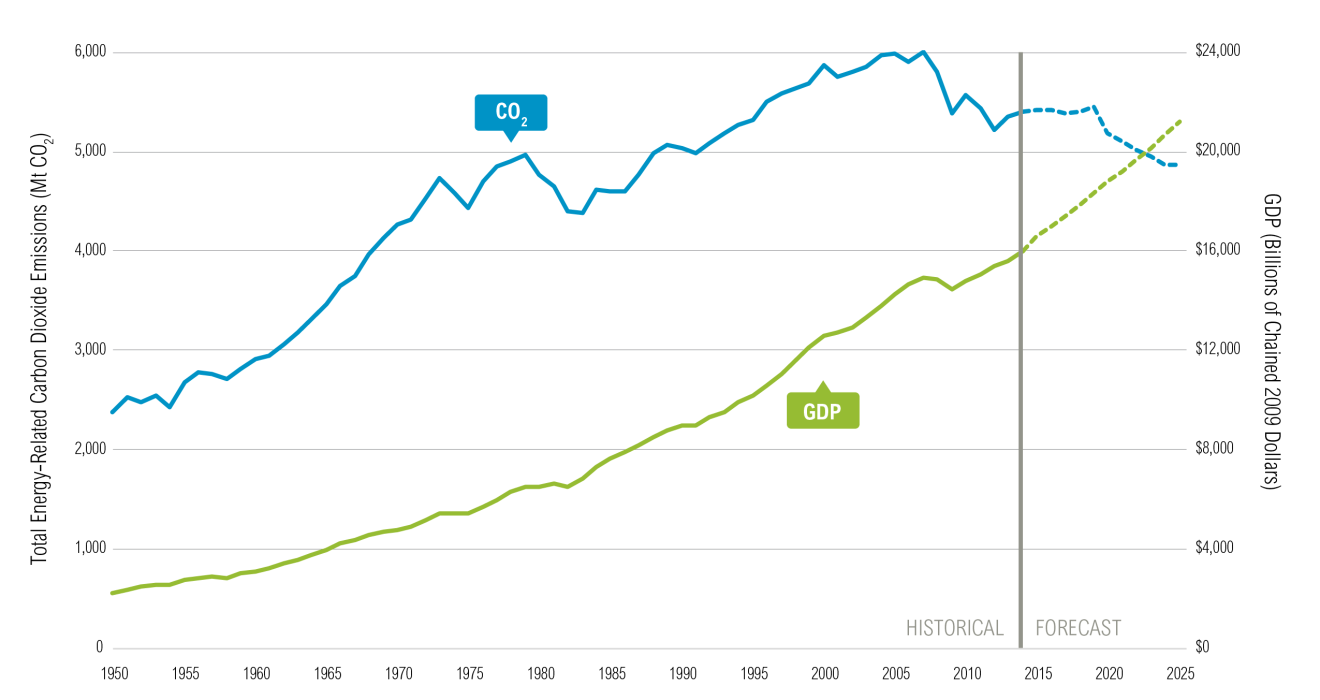In a mixed bag of news for environmentalists and policymakers alike, a preliminary analysis from the Rhodium Group has revealed that U.S. greenhouse gas emissions experienced a modest reduction of approximately 1.9% in 2023. This noteworthy decline comes against the backdrop of a growing economy, showcasing a rare instance where economic expansion and emissions reduction coexisted. However, while this development marks progress, it also underscores the need for heightened ambition at both governmental and industrial levels to achieve long-term climate goals.
Economic Growth vs. Emissions Reduction
In the intricate interplay of economic growth and environmental responsibility, Ben King, the associate director heading the Rhodium Group energy team, underscores a significant milestone in 2023. It marks a pivotal moment, breaking a trend since 2019, as the U.S. economy demonstrates growth while concurrently achieving a reduction in emissions. This dual achievement sheds light on the delicate equilibrium required to align economic prosperity with sustainability objectives. King’s observation underscores the complexity of navigating a path toward a more environmentally friendly future. The need for nuanced strategies and comprehensive approaches becomes evident, emphasizing the challenges and opportunities inherent in fostering both economic advancement and a commitment to reducing emissions.
Analyzing the Numbers and Implications
Delving into the numerical landscape and its ramifications, the 1.9% reduction in emissions emerges as a promising indicator, yet it simultaneously functions as a stark reminder of the challenges ahead. This modest decline serves as a reality check, highlighting the formidable uphill battle confronting the United States in its pursuit of ambitious climate targets. The intricate journey toward a sustainable future necessitates sustained and unwavering efforts, underscoring the imperative for a substantial acceleration in emission cuts. Aligning with international commitments demands a multifaceted approach, encompassing policy reforms, technological advancements, and collective societal engagement. The modest progress seen in 2023 reinforces the urgency for a more robust and concerted effort on multiple fronts, emphasizing the nation’s commitment to combating climate change and securing a resilient and environmentally responsible future.
A Glimpse into the Past and Its Implications for the Future
Reflecting on the historical trajectory and its ramifications for the road ahead, the significant drop in emissions witnessed in 2020 amid the global pandemic, coupled with a subsequent rebound in subsequent years, serves as a poignant illustration of the susceptibility of emissions to external influences. This fluctuation underscores the intricate relationship between human activities and environmental outcomes, emphasizing the pivotal role of unforeseen events in shaping emission patterns. Analyzing these historical patterns provides valuable insights into the challenges and opportunities inherent in the pursuit of sustainable practices. The lessons gleaned from the past underscore the need for adaptable and resilient strategies that can withstand external shocks, guiding future endeavors toward a more robust, sustainable, and climate-resilient approach to environmental stewardship.
The Biden Administration’s Climate Goals
The Biden administration’s commitment to rejoining the Paris Climate Agreement and targeting emission cuts of 50% to 52% by 2030 sets a clear trajectory. However, the current pace of emissions reduction suggests that achieving these targets demands not only persistence but a substantial acceleration of efforts at the highest levels of government.
Sectors Leading the Way and Lagging Behind
In the intricate tapestry of emission trends, the power and buildings sectors emerge as stalwarts of progress, casting a significant impact on the overarching decline in emissions observed in 2023. Their noteworthy contributions signify a commendable stride toward sustainability. However, juxtaposed against this positive trajectory are the transportation and industry sectors, which experienced an uptick in emissions? This discrepancy emphasizes the imperative for focused interventions and strategic policy initiatives aimed at decarbonizing these pivotal segments of the economy. The contrasting paths of advancement and challenge within these sectors underscore the nuanced nature of emissions reduction efforts, necessitating tailored approaches to address specific industry dynamics and promote a holistic transition towards a low-carbon future.
Examining the Role of Policy Initiatives in Shaping the Climate Landscape
President Joe Biden’s Inflation Reduction Act, aimed at incentivizing electrification, is starting to demonstrate its impact. The role of subsidies in sectors like domestic manufacturing, particularly in the production of solar panels and electric vehicles, is crucial. However, the road ahead requires a sustained commitment to climate-friendly policies, and the outcome of the 2024 presidential election is poised to play a decisive role in determining the trajectory of U.S. climate goals.
Conclusion
Balancing economic growth with emissions reduction remains a formidable challenge for the United States as it navigates the complexities of climate action. The modest decline in emissions in 2023 provides a glimpse of progress but also serves as a stark reminder of the urgency and scale of efforts needed to address the global climate crisis. As the nation stands at a crossroads, the choices made in the coming years will shape its ability to meet international commitments, leading the way or lagging behind in the global fight against climate change.

